The SDG-master Mastering & Glassmastering Technology
With digital technology is basically made for rectangular signals. The quality of the signal depends on how fast and how clean the 0-1 transition is and how stable is behaving this signal. The individual electronic components, however, have their own noise, lethargy, sensitivity to temperature, magnetism, electricity, etc. These sensitivities are so different that they can only deal in detail.
The matter is complicated by the signal from this single bit compiled by the given by the different codes for various electronic parts to the useful signal. These segments give a short signals of differing intensity and jitter values. These differences make the adjustability of the signal difficult. The signals have a rectangular shape rather than by a temporary slowdown beginning one overshoot with ringing.
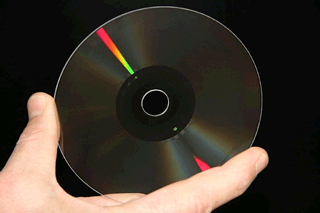 In practice, it looks like that if you away from the end of an audio or video file one seconds pause trims and stores, this is mapped by file according to the signal quality conditions of the plant. This phenomenon manifests itself through the narrowed dynamic headroom, loss of detail in sound and colour. Especially in the post these are also obscured by accumulation of quantization noise.
In practice, it looks like that if you away from the end of an audio or video file one seconds pause trims and stores, this is mapped by file according to the signal quality conditions of the plant. This phenomenon manifests itself through the narrowed dynamic headroom, loss of detail in sound and colour. Especially in the post these are also obscured by accumulation of quantization noise.
The SDG-master digital mastering facility was built so as to ensure an uncompromising quality comes about. It has resorted to unusual technical solutions to "cost no object" basis, which can be found in any currently known systems.
The main technical solutions are:
The result is an extremely clean square wave output signal. By using the system a resampling of the input signal is possible, through which he can be freed even brought along a portion of the quantization noise, which has accumulated during the post-editing.
Through this facility we have achieved a quality that the standard optical disc technologies without loss of quality can no longer play. Therefore it is necessary now to take the glass mastering technology under the microscope and to rebuild according to the SDG-mastering facility, the glass mastering facility.
The Top Quality as only Requirement
Summary
References: BNF (Library of France), THOMSON, NASA...EDF, French Telecom,Avantis,...
Description of the SDG-Masterglass-Disc Technology
The Multiple Advantages of the SDG-Masterglass-Disc
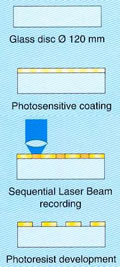 |
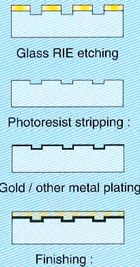 |
The Multiple Applications of the SDG-Masterglass-Disc
Why to choose the SDG-Masterglass Disc?
Mechanical and Chemical Resistance
| Comparison: | SDG-Masterglass Disc | CD/DVD |
|---|---|---|
| Optical | ||
transmission |
91% |
90% |
refraction |
1,5 |
1,58 |
birefringence |
2 nm |
30 nm |
| Mechanical | ||
weight |
33 g |
18 g |
hardness |
600 vickers |
70 rockwell |
maximum speed |
36 000 rpm |
4 000 rpm |
number of falls 1m |
350 000 |
>> |
dilatation |
8 10-6/*C |
70 10-6/*C |
test abrasion (Taber) |
OK |
NOK |
| Thermally | ||
low temperature |
-250 *C |
-150 *C |
high temperature |
350 *C |
80 *C |
transformation point |
550 *C |
140 *C |
Transparency, Flatness, Rigidity of this tempered glass are very important parameters for Life Time of the Datas
Time resistance
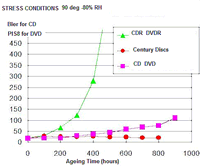 |
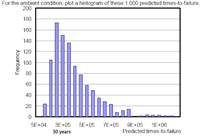 |
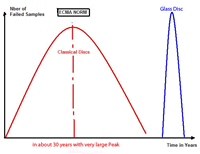 |
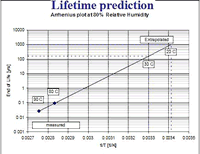 |
Multi-backups and copies useless
Recording Fidelity
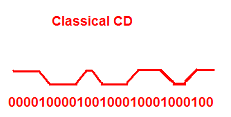 |
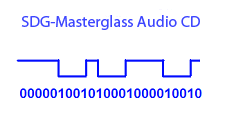 |
Lower Jitter (time clock pit jitter 13-15ns instead of 28-30ns for a Classical CD, 30-40ns for a CDR)
Form of etched pits (micro cups)
Recording Fidelity: Extract of the Glass Disc“SDG-Masterglass Disc and its Psycho-Acoustical Improvements” by Nicolas Bartholomée (famous french sound engineer)
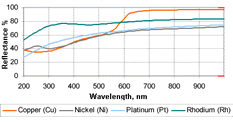 |
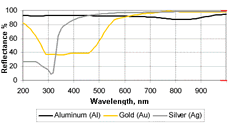 |
Recording Flexibility; Possible Customizing in mastering for every SDG-Masterglass-Disc:
Electrical Tests
Choice of Decorations and Reflectors
Customised Decoration:
"White Papers" are usually structured like this:
1. 1. Detailed explanation of theories as interpreted according to personal taste, as the author of the original can not defend,
2. 2. Prior art, which suffers from the symptoms of the common theories
3. 3. Presentation of his own theory, with indication, why are all the other stupid,
4. 4. Evidence of his own theory, which because of their ignorance of others, devoted exclusively to combating certain symptoms,
5. 5. Bibliography in order to build a semblance of broad gauge and objectivity.
This method does not, we pursue! It carries many risks, come to wrong conclusions, interpret miss someone, possibly insulting, what do we really want to avoid.
Let us honour the representations are already known to specialists, we close the contacts short to eliminate subjectivity and fill any knowledge gaps. Please read the listed documents, you can clear up by sound scientific knowledge. Then, visiting on the Internet known institutes, companies and studios.
Take you questions directly to the scientists, designers, sound engineers or mastering engineer. You will be fascinated by the equipment arsenal of studio overwhelm almost limitless post-production facilities. Your information will be up to date, raised at the latest. Then, (below), we shall meet again!
SHANNON, C. E.: A Mathematical Theory of Communication, The Bell System Technical Journal, 1948
Ken Pohlmann, Applied Digital Audio, Introductory Binary Mathematics, McGraw Hill, 1995
Hicks, Christofer: What is Dither? MTSU
Mike J. Story: Timing Errors and Jitter, dCS Ltd, Great Chesterford, 1998
Bob Katz: Jitteressay. Digital Domain, 2002
Nika Aldrich, Dither Explained, Cadenza, 2002
DCA (Doug Carson & Associates), Eclipse Data Technologies, Datarius, Singulus Mastering, M2 Engineering
Audio Research Group, Stanley Lipschitz, John vanderkooy, Audio Engineering Society, Verband Deutscher Tonmeister, Audio Precision, dCS Ltd., Digidesign, Fraunhofer IIS, Fraunhofer IDMT
Emil Berliner Studios, Master Digital Corporation, Mastering Studio München, Galaxy Studios, Bauer Studios, Super Audio Mastering, AbbeyRoad Studios
Bert van der Wolf, dCS: DXD=Digital Extreme Definition, 352,8kS/s
Mark Levinson: Re-vitalizing Audio Industry: Music and Health, 2004
And then you ask about something that does not depend on the development of theories and many years: over glitches. From zero to one we had to switch from the outset. They will lead some very entertaining conversations! Perhaps also on the health of many professionals. And now about Long Term archiving:
Longévité de l’information numérique / Les données que nous voulons garder vont-elles s’effacer ? Academie de Sciences & Academie de Technologie, Erich Spitz, Franck Laloë, Jean-Charles Hourcade, Paris, 2010, Invitation pdf, Conclusion et Recommandations pdf, Résumé pdf, Présentation des auteurs du rapport.pdf
Mikroverfilmung im Kulturgüterschutz
Long-Term Preservation Services, A description of LTP services in a Digital Library environment.
A successful Kick-Off for the DCA Project: Digitising Contemporary Art for Europeana
GIS-DON archivage numerique fonctionnement enregistrement optique
Ministererklärung zum eGovernment, einstimmig angenommen in Malmö, Schweden, am 18. November 2009